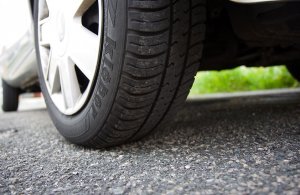 Tires affect a car’s handling and braking, so keeping them in tip-top shape is a simple way to improve drivers’ safety, but both cars and tires have changed dramatically in the last decade, and yesterday’s conventional wisdom about their care and maintenance has evolved. Before hitting the open road, here are five common tire myths car owners should ignore.
Tires affect a car’s handling and braking, so keeping them in tip-top shape is a simple way to improve drivers’ safety, but both cars and tires have changed dramatically in the last decade, and yesterday’s conventional wisdom about their care and maintenance has evolved. Before hitting the open road, here are five common tire myths car owners should ignore.
Myth #1
A tire’s ideal inflation pressure is listed on the sidewall.
Fact
Tire pressure is set by vehicle manufacturers and can be found in the owner’s manual or on the sticker in the driver’s side door jamb. The pressure noted on the tire is its maximum inflation level.
Myth #2
Tire-pressure monitoring systems warn drivers when tires should be inflated.
Fact
Monitoring systems only warn drivers when at least 25-percent of a tire’s pressure is lost. A reduction of just 10-percent affects tread wear, fuel efficiency and cornering. Experts recommend checking tires monthly with a pressure gauge as part of routine maintenance.
Myth #3
Tires should be rotated annually.
Fact
For optimal performance, tires should be rotated roughly every 7500 miles. The front tires on front-wheel drive vehicles bear more weight than the rear tires and tend to wear out faster. Rotating them regularly distributes the work evenly among all four tires, promoting even wear and longevity.
Myth #4
A tire is safe as long as it has adequate tread.
Fact
Rubber tires break down naturally over time, even when not in use. Heat, cold, ultraviolet light and exposure to environmental chemicals can cause dryness and cracking in the sidewalls known as dry rot. Excessively dry tires can be treated with a tire sealant to make them safe, but tires with advance dry rot could come apart on the road and should be replaced.
Myth #5
A tire will burst if it’s inflated past the maximum pressure listed on the sidewall.
Fact
The pressure at which a tire will burst far exceeds its maximum pressure. While minor overinflation negatively impacts a tire’s performance and fuel efficiency, owners shouldn’t be afraid to fill them as recommended.
Tires are one of a vehicle’s most essential safety features, and to protect precious cargo; it’s worth staying in the know about their proper upkeep.